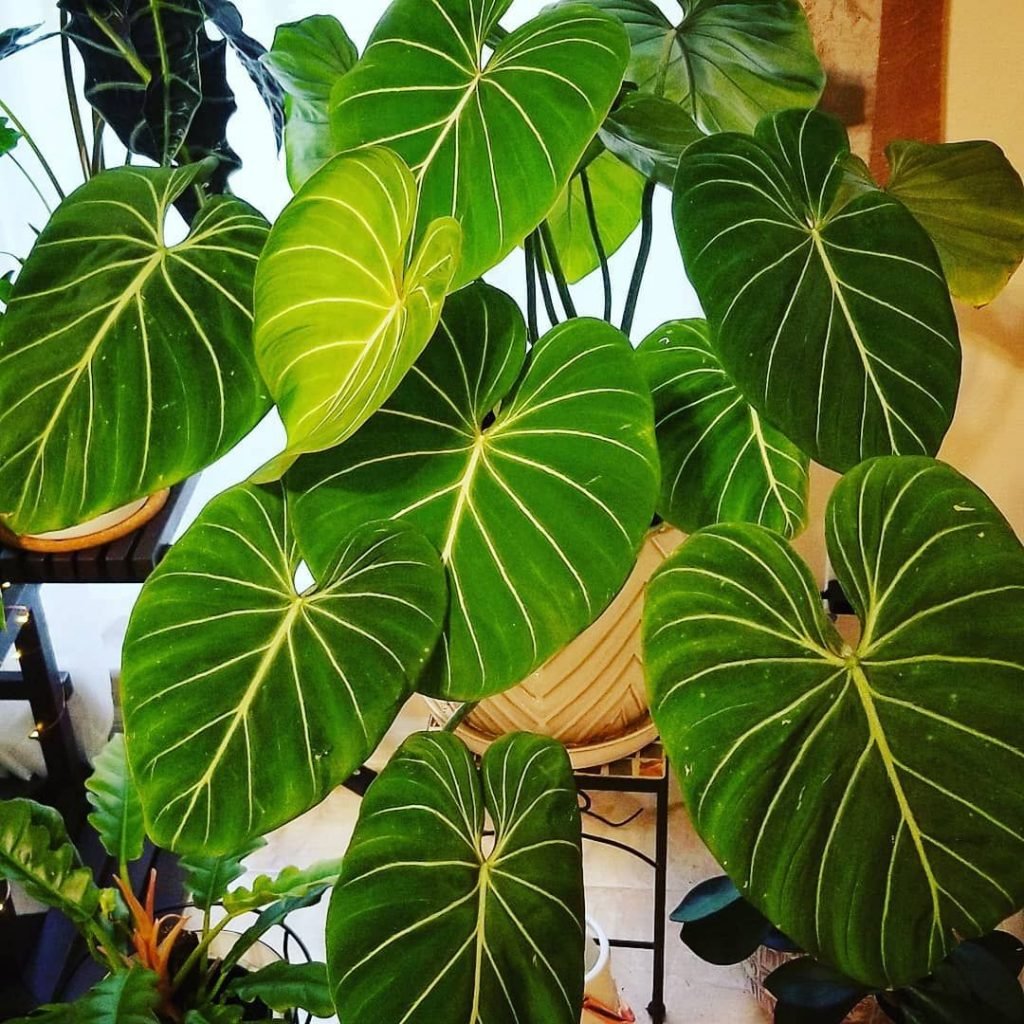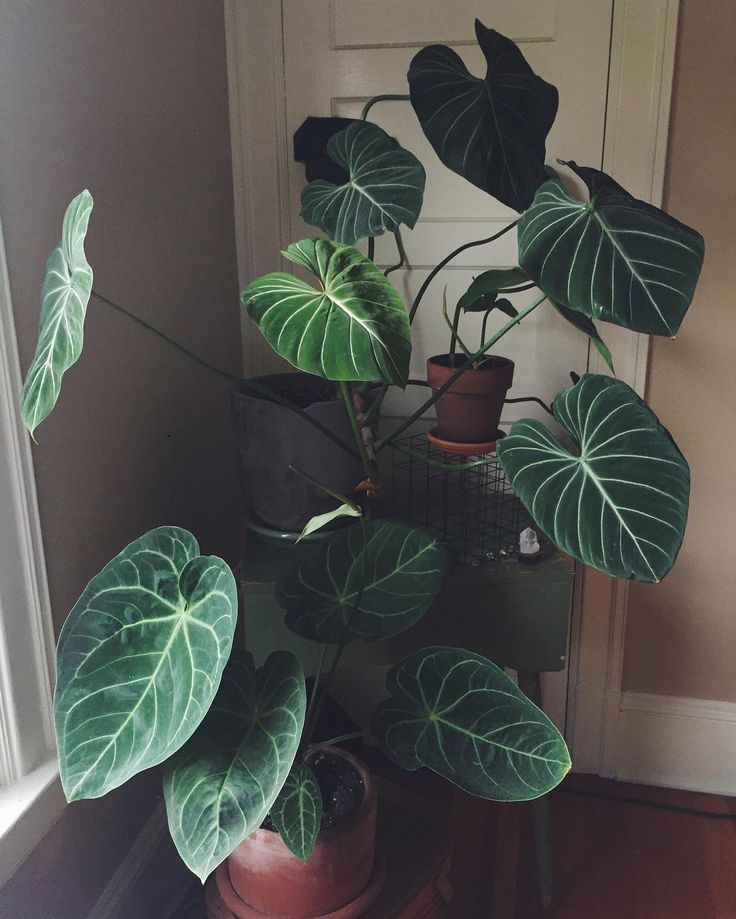Philodendron Gloriosum Overview
As an avid houseplant enthusiast and expert, I’ve nurtured a wide array of plants, but few have captivated me quite like the Philodendron gloriosum. This remarkable plant, with its lush, velvety leaves and striking appearance, makes a profound statement in any indoor garden. Here, I’ll share why the Philodendron gloriosum is a must-have for plant lovers, along with some botanical information and fascinating facts that make it a unique addition to your home.

Why Choose Philodendron Gloriosum as a House Plant
Philodendron gloriosum, with its sprawling, heart-shaped leaves and easy-care nature, has consistently been a standout in my collection. Its ability to bring a tropical and exotic feel to any room is unparalleled. Not only does it enhance the aesthetic of your living space, but it’s also relatively easy to care for, making it ideal for both novice and experienced plant enthusiasts.
The Aesthetic Appeal
One of the most compelling reasons to bring a Philodendron gloriosum into your home is its visual impact. The large, heart-shaped leaves, characterized by their deep green color and distinctive white veins, can grow impressively large, adding a lush, vibrant touch to your indoor space.
Air-Purifying Qualities
Like many Philodendrons, the gloriosum variety is also known for its air-purifying qualities. It’s a natural way to enhance the air quality in your home, making it not just a decorative element, but a functional one too.
Botanical Information and Interesting Facts
The Philodendron gloriosum, part of the Araceae family, is native to the tropical regions of Central and South America. It’s a crawling Philodendron, which means it grows horizontally and can spread out quite a bit if given the space. This growth habit makes it distinct from the more common upright-growing Philodendrons.
Growth Habits
What’s fascinating about the Philodendron gloriosum is its rhizomatous growth form. The plant sends out horizontal stems called rhizomes, from which the magnificent leaves emerge. This growth pattern means that, over time, the plant can cover a significant surface area, making it an excellent choice for floor planters or large, spacious areas.
Philodendron gloriosum Care Guide: Essentials for Thriving Growth
Light: Finding the Sweet Spot
Optimal Lighting Conditions Philodendron gloriosum thrives in bright, indirect light. In my experience, placing it near a window that receives filtered sunlight provides the ideal lighting condition. This plant can tolerate medium light, but it’s essential to avoid direct sunlight, which can scorch its delicate leaves.
Adapting to Indoor Light If you’re growing this plant indoors where natural light is limited, consider using grow lights. They’re a fantastic way to supplement light, especially during the shorter days of winter. Keep the light on for about 12-14 hours a day to mimic natural daylight hours.
Water: Balancing Moisture Needs
Watering Frequency and Technique The key to watering Philodendron gloriosum is consistency and moderation. I water mine when the top inch of the soil feels dry. Overwatering can lead to root rot, so it’s vital to ensure the pot has good drainage. Water thoroughly, allowing excess water to drain out.
Signs of Improper Watering Be vigilant for signs of over or underwatering. Yellowing leaves often indicate too much water, while dry, curling leaves can mean it’s time for a drink. Adjust your watering schedule based on these cues and the seasonal changes in your home environment.
Soil: Laying the Right Foundation
The Ideal Soil Mix A well-draining potting mix is crucial for Philodendron gloriosum. I usually opt for a mix rich in organic matter, like peat moss or coco coir, combined with perlite or vermiculite for increased aeration. This composition mimics the plant’s natural habitat and promotes healthy root growth.
Repotting Tips Repotting every 2-3 years or when the plant outgrows its pot is a good practice. Always choose a pot with drainage holes to prevent waterlogged soil. When repotting, handle the roots gently to avoid damage.
Temperature and Humidity: Creating the Perfect Environment
Ideal Temperature Range Philodendron gloriosum prefers warm environments with temperatures between 65-80°F (18-27°C). It’s sensitive to cold drafts and sudden temperature changes, so I keep it away from air conditioners and cold windows in the winter.
Humidity Requirements This tropical plant loves humidity. Aim for a humidity level of around 60%. If your home is dry, especially in the winter, using a humidifier or placing a water-filled pebble tray beneath the plant can help increase humidity levels.
Fertilizer: Nutritional Support for Healthy Growth
Fertilizing Regimen During the growing season (spring and summer), I fertilize my Philodendron gloriosum monthly with a balanced, water-soluble fertilizer, diluted to half strength. This provides the plant with essential nutrients without the risk of over-fertilization.
Adjusting Fertilization Be mindful of the plant’s response to fertilization. If you notice stunted growth or pale leaves, it might need more nutrients. Conversely, a buildup of salt on the soil surface or leaf burn can indicate over-fertilization. Adjust your fertilizing routine accordingly.

Growing Guide: A Comprehensive Care Manual
As an experienced house plant expert and enthusiast, I’ve cultivated a wide array of indoor plants, and Philodendron gloriosum, often known as “Glorious Philodendron,” holds a special place in my collection. In this detailed guide, I’ll share my insights into propagating, potting, and pruning this exquisite plant, ensuring that even beginners can achieve thriving growth.
How to Propagate Philodendron gloriosum
Starting from Stem Cuttings
Propagation is a gratifying aspect of Philodendron gloriosum care. I find that stem cuttings offer the best success rate. Here’s how to do it:
- Select a Healthy Stem: Look for a stem with at least two nodes (the little bumps on the stem where leaves and roots develop).
- Cut and Callous: Using a clean, sharp knife, cut just below a node. Allow the cutting to dry for a few hours to form a callous, which helps prevent rot.
- Rooting the Cutting: Place the cutting in water or moist sphagnum moss. I’ve had great results with both methods. If using water, change it every few days. In sphagnum moss, keep it consistently moist.
- Transplanting: Once roots develop (usually within a few weeks), transplant the cutting into potting soil.
Division Method
Another method is division, especially effective when repotting. Carefully separate a section of the plant, ensuring it has roots, and pot it in its own container.
Potting and Repotting Philodendron gloriosum
Choosing the Right Pot
Philodendron gloriosum prefers a snug environment, so select a pot that’s just slightly larger than the root ball. Ensure the pot has drainage holes to prevent waterlogged soil, which can lead to root rot.
The Best Soil Mix
I use a well-draining, airy potting mix, typically a blend of peat, perlite, and pine bark. This mix replicates the plant’s natural environment, providing the right balance of drainage and moisture retention.
When to Repot
Repotting is generally needed every two to three years or when the plant outgrows its current pot. The best time to repot is in the spring or early summer when the plant is entering its active growth phase.
Pruning Philodendron gloriosum
Why Prune
Pruning is essential for maintaining the size and shape of your Philodendron gloriosum, encouraging fuller growth, and removing any unhealthy parts of the plant.
Pruning Technique
Use clean, sharp pruning shears for a clean cut. Trim any overly long vines to maintain the desired shape. Also, remove any yellowed or dead leaves to keep the plant healthy and aesthetically pleasing.
Post-Pruning Care
After pruning, allow the plant to rest and recover. Avoid overwatering or fertilizing immediately after pruning, as this can stress the plant.

Navigating Pests and Common Problems
As a seasoned houseplant expert, I’ve seen my fair share of challenges when it comes to nurturing Philodendron gloriosum. Known for its lush, heart-shaped leaves, this stunning plant can face several hurdles, particularly concerning pests and diseases. Let’s delve into these challenges and explore effective solutions, drawing from my personal experiences and the best practices from leading gardening magazines.
Pests: Preventing and Treating Infestations
Identifying Common Pests
Philodendron gloriosum, in my experience, can attract a range of pests, such as mealybugs, spider mites, and scale insects. These pests often appear as small, unwelcome guests on the leaves or stems, causing various issues like leaf discoloration or stunted growth.
Mealybugs
Mealybugs present as tiny, white, cotton-like clusters. They sap the plant’s strength by feeding on its sap. To combat them, I often use a cotton swab dipped in rubbing alcohol to wipe them away gently.
Spider Mites
Spider mites are minuscule but can be identified by the fine webbing they leave on the plant. A regular shower for your Philodendron gloriosum can keep these pests at bay. In severe cases, I recommend using a mild insecticidal soap.
Scale Insects
Scale insects appear as small brown or tan bumps on the plant. They can be scraped off gently, or you can treat the plant with neem oil, a natural pesticide that I find very effective.
Preventative Measures
Regularly inspecting your Philodendron gloriosum and maintaining a clean environment are key preventative measures. Keeping the leaves dust-free and ensuring good air circulation around the plant can significantly reduce the likelihood of pest infestations.
Plant Diseases: Identification and Management
Root Rot: A Common Culprit
The most common disease I encounter with Philodendron gloriosum is root rot, often a result of overwatering. This condition leads to soft, brown roots and yellowing leaves. To prevent root rot, ensure your plant is in well-draining soil and in a pot with adequate drainage holes. Water only when the top inch of the soil is dry.
Leaf Spot Diseases
Leaf spot diseases, caused by fungal or bacterial pathogens, present as discolored spots on the leaves. Improving air circulation, reducing leaf wetness, and avoiding overhead watering can prevent these diseases. In severe cases, a fungicide may be necessary.
Common Problems and Solutions
Yellowing Leaves
Yellowing leaves can be a sign of overwatering, under-fertilization, or lack of light. Adjust your watering schedule, ensure your Philodendron gloriosum is receiving enough light, and consider a balanced fertilizer during the growing season.
Drooping Leaves
Drooping leaves often indicate underwatering or a drastic temperature change. Ensure your plant receives consistent moisture and is kept away from cold drafts or direct heat sources.
Leggy Growth
Leggy growth in Philodendron gloriosum usually means insufficient light. Move your plant to a brighter location, ensuring it receives bright, indirect sunlight for optimal growth.
In essence, the Philodendron gloriosum is not just a plant; it’s a statement piece that can transform the look and feel of your indoor space. Its dramatic foliage, ease of care, and air-purifying abilities make it a top choice for plant lovers. Whether you’re just starting your plant journey or looking to add a spectacular specimen to your collection, the Philodendron gloriosum is a plant that won’t disappoint.
You can also read about other types of Philodendron on our site. Previously, we wrote about the Heartleaf Philodendron, as well as Philodendron Micans. You might also find it interesting to read about Philodendron McDowell or Philodendron Birkin.

